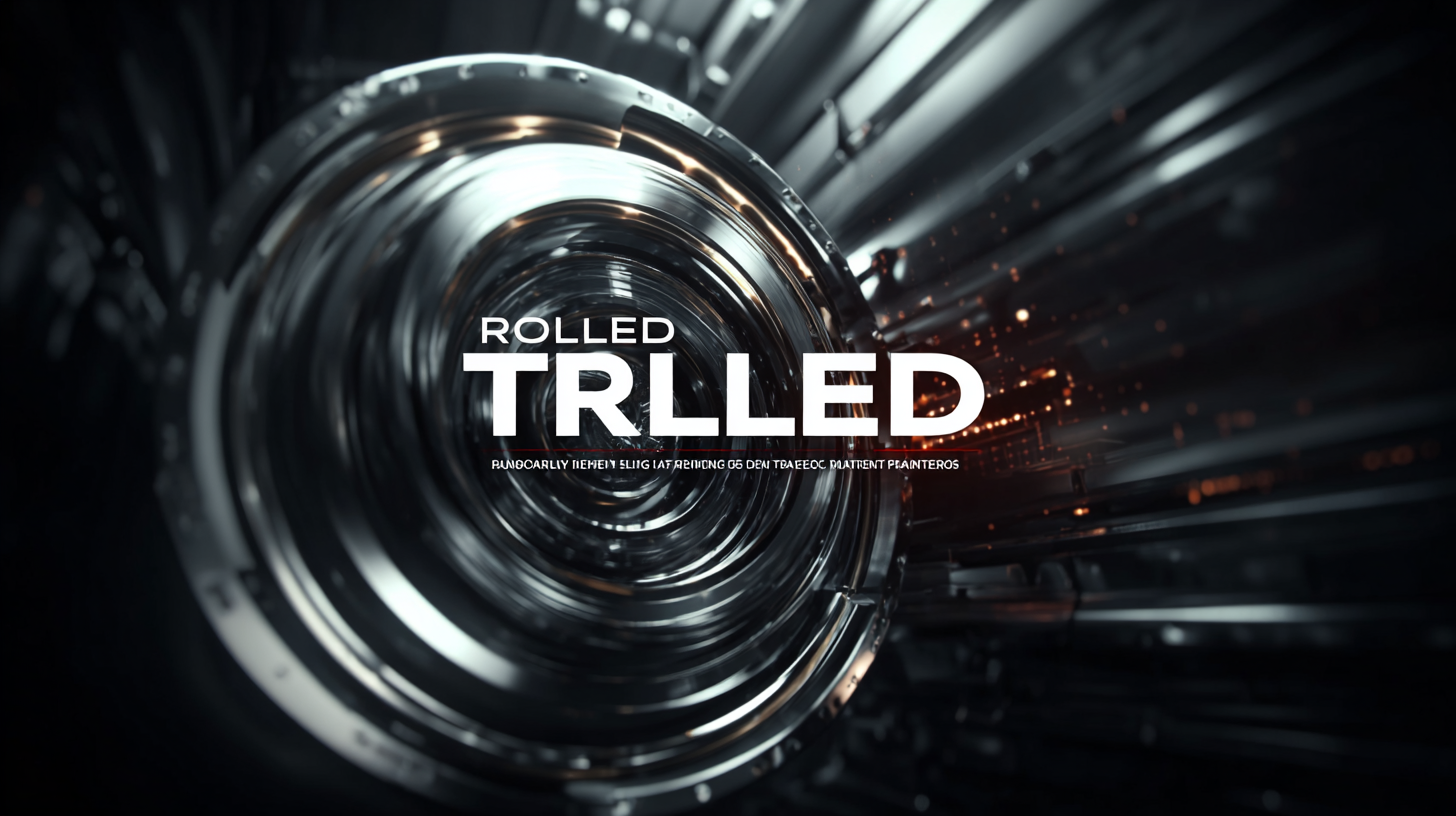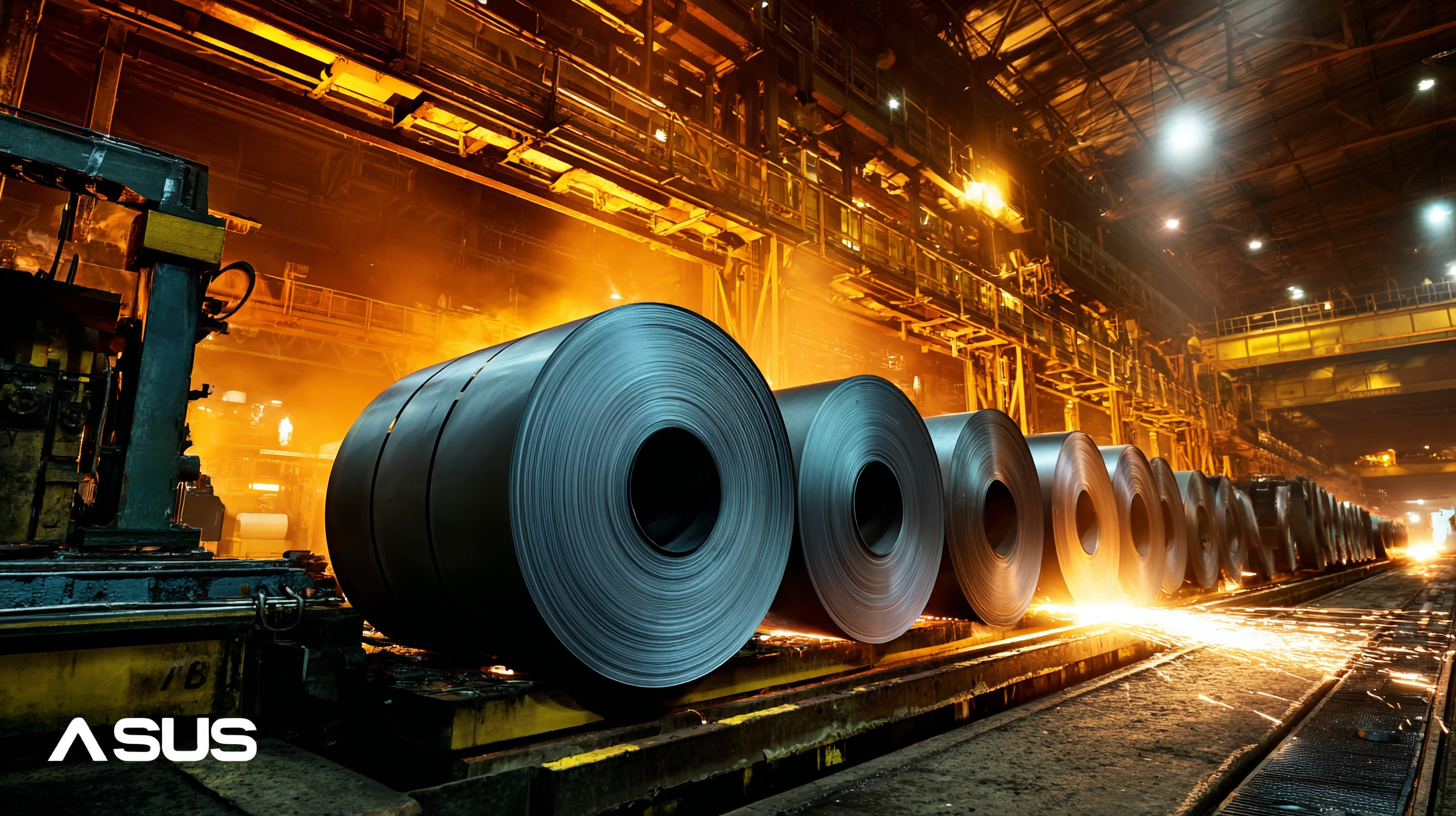As we approach 2025, the landscape of hot rolled plate manufacturing is set to evolve dramatically, influenced by rapid technological advancements. According to a recent report by MarketsandMarkets, the global hot rolled plate market is projected to reach USD 250 billion by 2025, with a CAGR of 5.2%. This growth is driven by increasing applications in industries such as automotive, construction, and manufacturing, where high strength and durability are paramount.

The implementation of cutting-edge manufacturing techniques, including automated production lines and enhanced quality control measures, is critical for companies aiming to stay competitive in this burgeoning market. By embracing these trends, manufacturers can not only improve efficiency but also meet the ever-growing demands for sustainable and cost-effective hot rolled plate solutions.
This blog will explore the emerging technologies that are shaping the future of hot rolled plate manufacturing and the strategies companies can adopt to navigate this transformative period.
The hot rolled plate manufacturing industry is on the brink of a transformative era as we approach 2025. Emerging technologies are paving the way for improved efficiency, quality, and sustainability in production processes. Innovations such as advanced automation, AI-driven quality control systems, and smart manufacturing practices are set to revolutionize how hot rolled plates are produced. These advancements not only enhance operational productivity but also reduce waste, leading to a more environmentally friendly approach to manufacturing.
Tip: Embrace automation by integrating robotics into your production line. This can significantly reduce human error and increase throughput, allowing your facilities to respond dynamically to demand fluctuations.
Furthermore, the implementation of IoT (Internet of Things) in conjunction with machine learning algorithms offers manufacturers real-time data insights, enabling predictive maintenance and enhanced decision-making. By harnessing the power of data analytics, companies can optimize their processes, reducing downtime and ensuring a consistent product quality.
Tip: Invest in training programs to upskill your workforce in operating new technologies. Employee engagement in emerging tech not only boosts morale but also ensures a smoother transition to modern manufacturing techniques.

As the landscape of hot rolled plate manufacturing evolves, innovative alternatives to traditional techniques are gaining traction. Conventional methods often involve high energy consumption and significant material waste, prompting manufacturers to seek sustainable solutions. One such alternative is the adoption of advanced automation and robotics, which enhances precision while minimizing human error. With the integration of artificial intelligence and machine learning, production processes can be optimized in real time, leading to greater efficiency and reduced operational costs.
Furthermore, alternative materials and eco-friendly coatings are becoming increasingly popular in the production of hot rolled plates. These innovations not only improve the durability and performance of the final products but also reduce their environmental impact. For instance, using recycled materials in the production process can significantly lower carbon footprints, aligning with global sustainability goals. By embracing these innovative alternatives, manufacturers can not only stay competitive but also cater to the growing demand for environmentally responsible practices in the industry.
In the rapidly evolving landscape of hot rolled plate manufacturing, sustainability has emerged as a pivotal focus for industry leaders. As environmental concerns continue to rise, manufacturers are optimizing their processes to reduce carbon footprints while enhancing product quality. Implementing energy-efficient technologies, such as electric arc furnaces and waste heat recovery systems, not only decreases emissions but also lowers operational costs, making it a win-win for businesses and the planet.
Another key aspect of sustainable practices is the emphasis on raw material sourcing. The shift towards recycled steel and eco-friendly materials contributes significantly to reducing the environmental impact. Manufacturers are increasingly collaborating with suppliers who are committed to sustainable practices, ensuring that the entire supply chain adheres to eco-friendly standards. Additionally, innovations in coating and surface treatment processes minimize material waste, further supporting sustainability goals. By integrating these techniques, the hot rolled plate industry is paving the way for a greener future while maintaining competitive edge and quality in production.

In the realm of hot rolled plate manufacturing, the integration of AI and automation is transforming traditional production techniques. The recent advancements highlight a significant shift, particularly with the ability to accurately identify minute defects in steel plates, which can greatly affect product quality. One of the industry's perennial challenges has been detecting hairline cracks, often requiring labor-intensive visual inspections by workers navigating the hazardous environment of hot steel plates. These manual processes are not only physically demanding but also prone to human error, underscoring the urgent need for innovative solutions.
With the emergence of AI-driven technologies, manufacturers are now able to employ sophisticated algorithms that identify these fine cracks with remarkable precision. By harnessing machine learning and automation, companies can reduce the reliance on manual inspection, significantly improving both safety and efficiency. Such technologies promise to revolutionize quality control in hot rolled plate production, enabling manufacturers to produce higher-quality materials while streamlining operations. The shift towards AI and automation is not merely a trend; it represents a crucial step in modernizing the steel industry for the future.
This chart illustrates the assessed impact levels of various technology trends on hot rolled plate manufacturing as we approach 2025. The trends analyzed include the integration of AI, adoption of automation, improvements in production efficiency, waste reduction strategies, and overall cost savings.
As we approach 2025, the landscape of hot rolled plate manufacturing is set to undergo significant transformation due to emerging technological trends. Industry reports suggest that automation and artificial intelligence (AI) will play critical roles in enhancing production efficiency and product quality. For example, incorporating AI-driven predictive maintenance systems can reduce downtime by up to 30%, directly impacting the bottom line and operational continuity.
To future-proof manufacturing processes, companies must embrace digitization alongside traditional techniques. Investing in advanced data analytics not only helps in real-time monitoring of production lines but also optimizes supply chain management. A recent survey indicated that 70% of manufacturers are gearing up to implement smart technologies by 2025, making it imperative for businesses to adapt swiftly.
**Tips:**
1. Leverage AI tools for predictive analytics to enhance operational efficiency.
2. Invest in training programs to upskill employees on new technologies.
3. Monitor industry trends closely through reports and market research to stay ahead of the competition.
| Technology Trend | Description | Impact on Manufacturing | Implementation Timeline |
|---|---|---|---|
| Automation and Robotics | Utilizing automated systems for enhanced precision and efficiency in production lines. | Increased production speed, reduced human error, and lower operational costs. | 2023-2025 |
| IoT Integration | Connecting machines to the internet for real-time monitoring and data analysis. | Enhanced operational visibility and predictive maintenance capabilities. | 2024-2025 |
| Advanced Materials | Development of high-strength, lightweight materials for better performance. | Improved product durability and reduced material costs. | 2023-2025 |
| Artificial Intelligence | Implementing AI for optimizing production processes and decision-making. | Enhanced efficiency and quality control while minimizing waste. | 2025 |
| Sustainability Practices | Adopting eco-friendly processes and materials in manufacturing. | Reduced carbon footprint and compliance with regulatory standards. | 2023-2025 |



